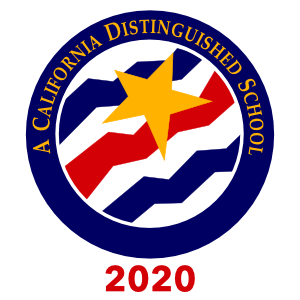Equity in Our Village
By Amilia F., Parent
“Equality and Equity… Does anybody know the difference?”
I was cleaning up dropped pencils and paper scraps on the back table, but my head popped up at the question. “That’s a pretty big concept for six-year olds,” I thought, intrigued. Teacher Aline was introducing the new Hokki chairs that had been delivered to her classroom earlier in the week. There were only 4 of these special chairs, and 24 eager bodies.
“Equal is when everybody gets the same thing,” she continued, pointing to a poster of three kids watching a baseball game from behind a fence. Each kid was standing on a box to get a better view. “In this photo, even though each child received exactly the same thing – one box – the result is that the shortest kid still can’t see.”
“Now look what happens if we take the same three boxes, but give them to the kids who need them.” In this version, all kids ended up with a clear view of the baseball game. “This is Equity,” Aline explained. “The kids may not have received the same thing, but they all have the same outcome.”
When it was clear that the students were following her logic, she showed them the new chairs. “You will all get a chance to try out these chairs and, when it’s your turn, I want you to think about whether you like the chair or whether you need it.”
“Some of our friends have a harder time sitting safely in regular chairs,” she continued, “so maybe they need these chairs to sit safely and to focus. Other friends like the chairs, but they don’t need them. Since we only have four Hokki, I need your help deciding how to share them equitably so that the end result is that all of our friends can be safe and learn.”
…
I can’t find words to explain how profoundly, even emotionally, these words affected me. I’d never really had it broken down quite so simply, visually, un-disputably. It made me see the classroom, and so many other every-day happenings at school in a whole new light…
Where before I saw an over-abundance of choice, I now saw opportunity for self-reflection and focus in the varied seating options — from the aforementioned Hokis, to bean bags, to swivel chairs, to standard-issue classroom chairs. I watched a single math lesson, reconstructed as an art activity, as word problems, as dice games, and even reinforced in small, teacher-led groups — an attempt to individualize instruction to a wide range of learning styles. I participated in group snack, where all children ate together until their tummies were full, regardless of allergies and of parent-ability to provide food. In this revised context, popsicle sticks with names written on them became ‘equity’ sticks to ensure students were called on at random (not subconscious bias) and Kindergarten Book Browse (which recently went parent-free) became an empowering moment for students to read the “just right” books selected specifically for them, tailored to their individual reading levels.
Equity is not a new concept, but it has become a big buzzword in the educational community over the last several years. “If equality means giving everyone the same resources, equity [has meant] giving each student access to the resources they need to learn and thrive.”1 The philosophy has gained enough traction that, this past year, the Campbell Unified School District hired a full-time Equity Administrator, April Mouton, in addition to the Equity Coach staff position at each district school. (At Village, Teacher Andy fills this position.) But what impact have these positions had in terms of reform and what really is their function?
April describes her job as analyzing statistics on student performance, identifying demographics that are not succeeding and then developing ways to address or compensate for these disparities. This could mean anything from connecting families with community resources and local support organizations to coaching teachers on how to modify their teaching to target a struggling demographic. She makes regular visits to all of the classrooms in our district to observe teachers, identify successful practices and coach teachers.
She speaks directly and honestly about the importance of identifying one’s own individual triggers and biases, and about how self-evaluation and awareness can help a teacher to better serve her students.
She is also passionate about supporting minority populations and is a proponent of ‘culturally responsive teaching,’ a practice that recognizes the importance of including students’ cultural references in all aspects of learning. She advises teachers to be intentional in their lessons to make the curriculum relatable for students.
And, finally, she deeply believes that every child can succeed if they feel that they are valued. She describes Individual Educational Plans (IEPs) not as a sign that a child can’t learn, but as a reminder that every child learns differently. In this revised framework, the question of how to support an underperforming child (or demographic) becomes, “How can we change our teaching to accommodate this child’s (or demographic’s) uniqueness?”
As for our School Equity Coach, Teacher Andys job is to be both an advocate for our students and an on-site resource for our staff. He provides coaching, feedback and support to teachers in their work with our students. He advises and models for them to how to provide ‘differentiated instruction’ — that is, how to tailor their teaching methods, lesson plans or classroom to students’ varied individual needs. His coaching job is to support our teachers in planning and delivering equitable instruction.
Every day — both in obvious and apparent ways, as well as in hundreds of small, barely noticeable, but deliberate ways — the teachers and staff in our Village work diligently to ensure that all of our children succeed. Because, despite our many individual differences, ‘We all belong; we are all significant.’
References
1. “Equity vs. Equality: 6 Steps Towards Equity” by Shane Safir



